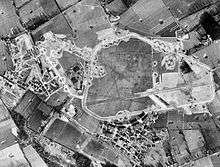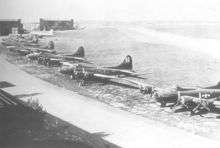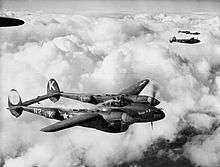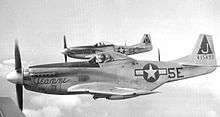RAF Honington
| RAF Honington USAAF Station 375 .png) | |||||||
|---|---|---|---|---|---|---|---|
| Near Thetford, Suffolk in England | |||||||
|
Station Crest | |||||||
 EGXH Shown within Suffolk | |||||||
| Coordinates | 52°20′33″N 000°46′23″E / 52.34250°N 0.77306°ECoordinates: 52°20′33″N 000°46′23″E / 52.34250°N 0.77306°E | ||||||
| Type | Royal Air Force station | ||||||
| Site information | |||||||
| Owner | Ministry of Defence | ||||||
| Operator |
Royal Air Force 1937-1942 United States Army Air Forces 1942-1946 Royal Air Force 1946-present | ||||||
| Site history | |||||||
| Built | 1935/6 | ||||||
| In use | 1937-Present | ||||||
| Garrison information | |||||||
| Occupants |
| ||||||
| Airfield information | |||||||
| Identifiers | IATA: BEQ, ICAO: EGXH | ||||||
| Elevation | 53 metres (174 ft) AMSL | ||||||
| |||||||
Royal Air Force Honington or more simply RAF Honington (IATA: BEQ, ICAO: EGXH) is a Royal Air Force station located 6 mi (9.7 km) south of Thetford near Ixworth in Suffolk, England. Although used as a bomber station during the Second World War, RAF Honington is now the RAF Regiment depot.
History
Royal Air Force use
Construction of Honington airfield, which was undertaken by John Laing & Son, began in 1935, and the facility was opened on 3 May 1937.[1] Squadrons of RAF Bomber Command using the airfield prior to the Second World War were:
- No. 77 Squadron RAF (Hawker Harts and Vickers Wellesleys) (July 1937 - July 1938)
- No. 102 Squadron RAF (Handley Page Heyford) (July 1937 - July 1938) - Moved to RAF Driffield
- No. 75 Squadron RAF (Handley Page Harrow and Vickers Wellington) (July 1938 - July 1939) - Moved to RAF Stradishall.
- No. 215 Squadron RAF (Harrow and Wellington) (July 1938 - July 1938) - Moved to RAF Bassingbourn.
- IX Squadron (Wellington Mk Is, later changing to Mk lAs.) (4 September 1939 - 1940).
IX Squadron flew the first RAF bombing raid of the Second World War on 4 September 1939 flying a mission against the Kriegsmarine in the Baltic resulting in the loss of two Wellingtons. The squadron lost 79 Wellingtons flying from Honington before moving to RAF Waddington.
In July 1940, No. 311 (Czech) Squadron RAF formed at Honington with Wellingtons, later moving to RAF East Wretham in November 1940.
The Luftwaffe made several attacks on the airfield one of which killed about twenty airmen who were crossing the old parade ground on their way to tea. Another bomb demolished part of Barrack Block 76, which was rebuilt between 1993 and 1996.
In 1941, a Junkers Ju 88 was shot down by ground fire from Honington. The aircraft crashed at the east end of E Hangar.
Then, in May of that year, a Wellington returning from a night trip attempted to land at Honington with its wheels retracted. It skidded to one side and crashed into the main bomb dump where it burst into flames. Group Captain J. A. Gray and Squadron Leader J. A. McCarthy, the station medical officer, were the first on the scene of the crash. Both entered the burning aircraft in an attempt to rescue the crew who were trapped and, between them, two crew-members were saved. For this gallantry, both officers were awarded the George Medal.[2]
United States Army Air Forces use

In June 1942, the airfield was transferred to the USAAF and was upgraded to a Class A Bomber base. Honington was assigned USAAF designation Station 375.
USAAF Station Units assigned to RAF Honington were:[3]
- 314th Service Group[4]
- 467th Service Squadron; HHS 314th Service Group
- 18th Weather Squadron
- 68th Station Complement Squadron
- 9th Depot Repair Squadron
- Headquarters (Western Base Section)
Regular Army Station Units included:
- Headquarters & Headquarters Battery (386th Anti-Aircraft Artillery Battalion)
- 386th Anti-Aircraft Artillery AW Battalion
- 386th Anti-Aircraft Artillery Battalion
- 1097th Signal Company
- 1178th Quartermaster Company
- 1221st Military Police Company
- 1599th Ordnance Supply & Maintenance Company
- 2017th Engineer Fire Fighting Platoon
1st Strategic Air Depot

Under USAAF control, an additional facility, called Troston, was constructed to the west of the main airfield as a specialized air depot for the repair of badly-damaged B-17 Flying Fortress bombers and supporting the 3d Bomb Division located in the area. Badly damaged Fortresses were often instructed to crash land at Honington on return from operations, particularly if their landing gear could not be lowered, as this avoided the necessity to dismantle and transport the aircraft from its home base for repair.[3]
364th Fighter Group



In addition to the air depot, Honington also housed an operational fighter unit when the 364th Fighter Group took up residence at Honington in February 1944, arriving from Santa Maria AAF, California. The group was under the command of the 67th Fighter Wing of the VIII Fighter Command. Aircraft of the 364th were identified by a blue/white stripe pattern around their cowlings.
The group consisted of the following squadrons:
- 383d Fighter Squadron (N2)
- 384th Fighter Squadron (5Y)
- 385th Fighter Squadron (5E)
The 364th FG flew escort, dive-bombing, strafing, and patrol missions in France, Belgium, the Netherlands, and Germany. At first the group operated primarily as escort for B-17/Consolidated B-24 Liberator heavy bombers.
The group patrolled the English Channel during the Normandy invasion in June 1944, and, while continuing escort operations, supported ground forces in France after the invasion by strafing and bombing locomotives, marshalling yards, bridges, barges, and other targets.
Converted from Lockheed P-38 Lightnings to North American P-51 Mustangs in the summer of 1944 and from then until the end of the war flew many long-range escort missions heavy bombers that attacked oil refineries, industries, and other strategic objectives at Berlin, Regensburg, Merseburg, Stuttgart, Brussels, and elsewhere. The 364th received a Distinguished Unit Citation for an escort mission on 27 December 1944 when the group dispersed a large force of German fighters that attacked the bomber formation the group was escorting on a raid to Frankfurt.
The 364th also flew air-sea rescue missions, engaged in patrol activities, and continued to support ground forces as the battle line moved through France and into Germany. Took part in the effort to invade the Netherlands by air, September 1944; the Battle of the Bulge, December 1944-January 1945; and the assault across the Rhine, March 1945.
Although the last mission by the 364th took place on 25 April 1945, the group did not depart until November, returning to Camp Kilmer, New Jersey, for inactivation. Even then, Honington remained the lone Eighth Air Force outpost in the UK becoming Fighter Command HQ on 5 October.
Honington was the last USAAF station to be returned to the RAF. By the beginning of 1946, the airfield remained the only active station which had been used by the Eighth Air Force and a fitting ceremony was planned to mark its closure and official handing back to the Royal Air Force. On 26 February, Brigadier General Emil Kiel - the Eighth Fighter Command commander - was present to hand over the keys of the station to Air Marshal Sir James Robb, AOC RAF Fighter Command. An RAF band played The Star-Spangled Banner as the Stars and Stripes were lowered for the RAF Ensign to be hoisted in its place.
Back to Royal Air Force control
With the departure of the USAAF in February 1946, Honington airfield was returned to the RAF. It became a major servicing centre for RAF Transport Command aircraft. During the Berlin Airlift, RAF Honington played a major role in keeping the aircraft of Transport Command flying. In 1949, the station reverted to Bomber Command.
From 1950 to 1956, RAF Honington housed No. 94 Armament Maintenance Unit for bomb storage. The airfield was upgraded during this time to include a 9,000 ft concrete runway.
English Electric Canberra bomber squadrons, 10, XV, 44, and 57 were based at RAF Honington from February 1955 to 1957. 10 and XV Squadrons took part in the Suez Crisis of 1956.
In 1956, RAF Honington also became one of the main V bomber bases maintaining three Vickers Valiant squadrons, Nos, 7, 90, and 199. Later Handley Page Victor Squadrons, 55 and 57 were added. New facilities were constructed including a large East-West runway. These squadrons left in 1965 and the airfield was placed in reserve for conversion to accommodate the new General Dynamics F-111 fleet. While in reserve, Honington Married Quarters were used to accommodate evacuees from the Aden Emergency in 1967, as recorded in the book "From Barren Rocks to Living Stones".
In the event, the F-111 never entered service with the RAF, and in 1968, the airfield became the UK base for the RAF's Hawker Siddeley (Blackburn) Buccaneer bomber. The first aircraft arrived in November 1969 and deliveries continued throughout the early 1970s. Nos. 12, 15 and 16 squadrons were formed. 15 and 16 squadrons moved to RAF Laarbruch in West Germany in 1971. Also, No. 237 OCU (Operational Conversion Unit) formed to provide No. 208 training squadron which was operational in 1974. The Buccaneers operated from RAF Honington until the 1980s when they relocated to RAF Lossiemouth in Scotland.
IX(B) Squadron reformed at RAF Honington in August 1982, becoming the world's first Panavia Tornado GR1 squadron. The aircraft were equipped with WE.177 nuclear laydown bombs. 45 Squadron (TWCU) Tornado Weapons and Conversion Unit were based at Honington in the 80's and early 90's where pilots would practice firing out at sea. In the early 90's new buildings and Hardened Aircraft Shelters (HAS's) were built and 13 Squadron moved in. They were used in the Gulf War in 91. At this time only one Regiment Sqn was based at Honington, 20 Sqn. Their equipment being sent to the Gulf via Hercules aircraft from RAF Lyneham.
13 Sqn moved to Marham and TWCU to Lossiemouth (To replace the Buccaneers) in 1994.
Units
The following units were here at some point:[5]
- No. 1 Transport Aircraft Modification Unit RAF
- No. 3 Group Practice Flight RAF
- No. 5 Blind Approach Training Flight RAF
- No. 13 Blind Approach Training Flight RAF
- No. 58 Maintenance Unit RAF
- No. 103 Elementary Gliding School RAF
- No. 103 Gliding School RAF
- No. 237 Operational Conversion Unit RAF
- No. 611 Volunteer Gliding Squadron RAF
- No. 1504 (Beam Approach Training) Flight RAF
- No. 1505 (Beam Approach Training) Flight RAF
- No. 1513 (Beam Approach Training) Flight RAF
- Avionic Development and Servicing Unit (Buccaneer) RAF
- Joint Rapier Training Unit RAF
- Rapier Training Unit RAF
- Strike Command Avionics Development and Servicing Unit RAF
- Strike Command Buccaneer Force RAF
- Tornado Weapons Conversion Unit RAF
- Transport Command Major Servicing Unit RAF
- Transport Command Signals Training Unit RAF
Current use
The station is now the single hub for RAF Force Protection incorporating the RAF Regiment Headquarters and the RAF Police Headquarters. It is home to the following RAF formed units: No 3 RAF Police Wing (formerly Tactical Provost Wing) Tactical Provost Wing, 1 Sqn RAF Regt, 2 Sqn RAF Regt (Parachute), 15 Sqn RAF Regt, 26 Sqn RAF Regt (Joint CBRN), and 27 Sqn RAF Regt.
RAF Honington is also now home to 611 Volunteer Gliding Squadron due to the closure of RAF Watton in April 2012, requiring their conversion to the Grob 109B Vigilant motor glider.
Operational units
- Wings
- RAF FP Force Headquarters
- Headquarters RAF Police
- 20 (Defence CBRN) Wing RAF Regt
- Support Wing
- RAF Regt Training Wing
- No 3 Royal Air Force Police Wing [6]
- No 20 Wing RAF Regiment
- Squadrons
- 1 Sqn RAF Regt
- 2 Sqn RAF Regt
- 15 Sqn RAF Regt
- 26 Squadron RAF Regiment
- 27 Sqn RAF Regt
- 2623 Sqn RAuxAF Regt
- No. 611 Volunteer Gliding Squadron RAF with Grob Vigilant T.1's
See also
References
![]() This article incorporates public domain material from the Air Force Historical Research Agency website http://www.afhra.af.mil/.
This article incorporates public domain material from the Air Force Historical Research Agency website http://www.afhra.af.mil/.
Citations
- ↑ Ritchie, p. 91
- ↑ London Gazette Issue 35270 published on the 9 September 1941. Page 1
- 1 2 "Honington". American Air Museum in Britain. Retrieved 16 Mar 2015.
- ↑ "314th Service Group". American Air Museum in Britain. Retrieved 16 Mar 2015.
- ↑ "Honington". Airfields of Britain Conservation Trust. Retrieved 10 February 2016.
- ↑ "RAF police move to new headquarters at Honington in Suffolk". BBC News. Retrieved 12 September 2015.
Bibliography
- Freeman, Roger A., Airfields Of The Eighth, Then And Now, 1978
- www.controltowers.co.uk Honington
- mighty8thaf.preller.us Honington
- 364th Fighter Group on www.littlefriends.co.uk
- Maurer Maurer, Air Force Combat Units Of World War II, Office of Air Force History, 1983
- USAAS-USAAC-USAAF-USAF Aircraft Serial Numbers--1908 to present
- Ritchie, Berry (1997). The Good Builder: The John Laing Story. James & James.
External links
| Wikimedia Commons has media related to RAF Honington. |
- RAF Honington on RAF Website
- 364th Fighter Group website
- Airport information for EGXH at World Aero Data. Data current as of October 2006.

